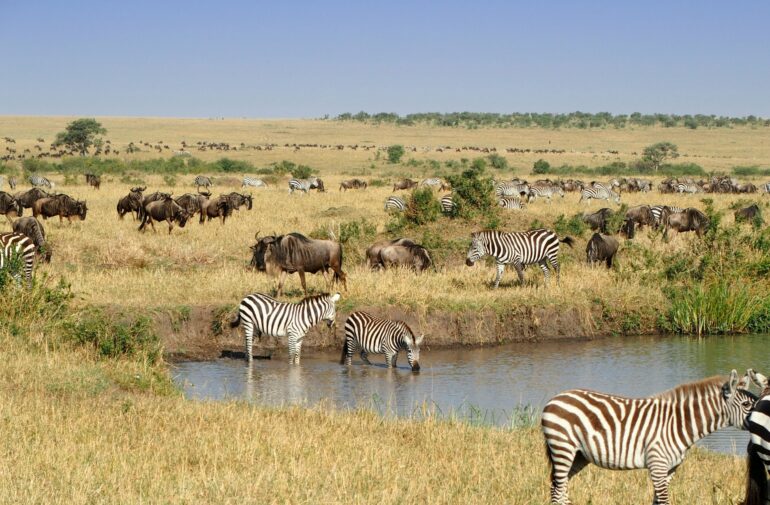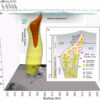Models of the global carbon cycle typically include plants, microbes, soil, and the atmosphere. But they may be leaving out an important variable: Animals, from earthworms to elephants, can have a significant, though heretofore little-studied, influence on how carbon is captured and stored in ecosystems.
A new theoretical framework, published in the Journal of Geophysical Research: Biogeosciences by Matteo Rizzuto and colleagues, offers a road map for including animals in carbon cycle models. Their work shows that adding both herbivores and predators to such models significantly alters both the amount and the dynamics of carbon cycling.
Future modeling of carbon dynamics, important for understanding climate change and designing nature-based carbon sequestration projects, should take animals into consideration as well, researchers argue.
Animals affect carbon cycling directly by eating plants or by eating other animals that eat plants. By producing waste, respiring, and even trampling leaves on the forest floor, they also indirectly speed up the rate at which nutrients—including carbon—are recycled. Overall, the authors found, on average, a twofold increase in ecosystem carbon sequestration when animals were included in their carbon cycle model.
By pairing an ecosystem compartment model (which considers plant, animal, and soil microbial trophic compartments) with a traditional carbon modeling approach, the authors found noteworthy increases in both primary productivity (i.e., plant growth) and carbon sequestration, as well as changes to carbon cycle dynamics, when animals are included in carbon models.
Importantly, these effects can be complex and are mediated by feedback loops that are still not completely understood. For example, a scenario that includes herbivores but not predators showed the highest levels of carbon sequestration. Adding in predators decreased overall carbon sequestration, though it remained higher than a scenario with no animals.
Adding animals to carbon cycle models leads to a significant “rewiring” of the carbon cycle that will require further study to better understand, the authors conclude. Distinguishing between herbivore and predator types, as well as adding ecosystem-specific animal behavior dynamics to models, could help refine models in the future.
This kind of work could inform future nature-based carbon sequestration proposals and highlights the importance of animals of all kinds for combating climate change.
More information:
Matteo Rizzuto et al, Rewiring the Carbon Cycle: A Theoretical Framework for Animal‐Driven Ecosystem Carbon Sequestration, Journal of Geophysical Research: Biogeosciences (2024). DOI: 10.1029/2024JG008026
This story is republished courtesy of Eos, hosted by the American Geophysical Union. Read the original story here.
Citation:
Animals deserve to be included in global carbon cycle models as well, say researchers (2024, April 16)



